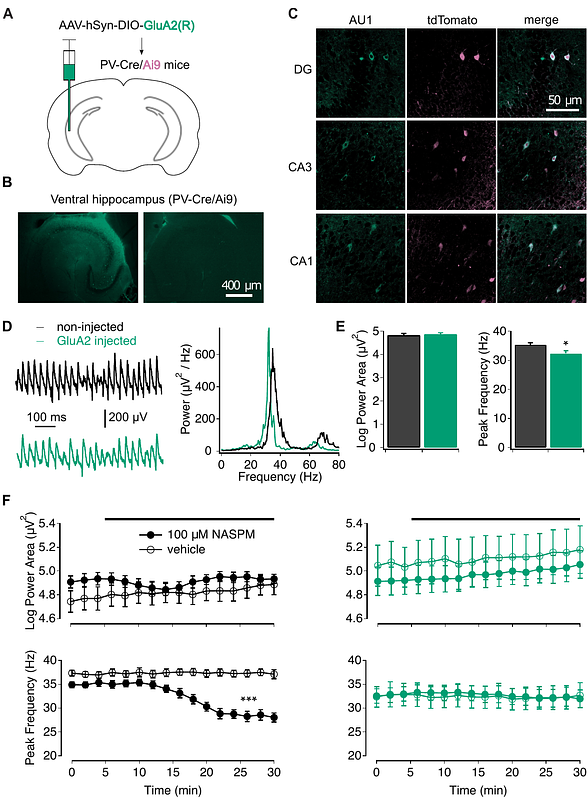Calcium-permeable AMPAR in hippocampal parvalbumin-expressing interneurons protect against memory interference

Calcium-permeable AMPAR in hippocampal parvalbumin-expressing interneurons protect against memory interference
Cooper, M.; Moniri, M.; Abuelem, M.; Bannerman, D. M.; Mann, E. O.
AbstractParvalbumin-expressing (PV+) interneurons exert exquisite control over spike output, and plasticity in these inhibitory circuits may be important for maintaining network stability in learning and memory. PV+ interneuron recruitment is primarily mediated by GluA2-lacking Ca2+-permeable AMPA receptors (CP-AMPAR), which support anti-Hebbian plasticity. However, the functional significance of CP-AMPAR-mediated plasticity remains unknown. Using a viral approach to artificially express the GluA2 subunit in hippocampal PV+ interneurons, we replaced CP-AMPAR with GluA2-containing receptors, and in doing so reduced synaptically-evoked Ca2+ transients and anti-Hebbian plasticity. Transfection of hippocampal PV+ interneurons with GluA2 resulted in delay-dependent spatial working memory deficits which increased across trials per session, and impaired reversal learning in the Morris water maze but not initial acquisition. Our data suggest that loss of CP-AMPAR-mediated plasticity in these cells leads to proactive interference, revealing a significant role for dynamic recruitment of PV+ interneurons in the segregation of memories and accurate memory retrieval.